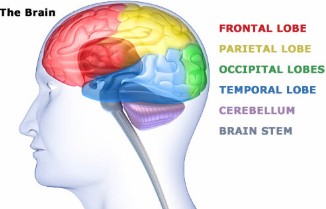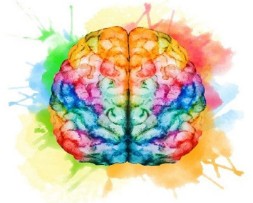




Inspired by The Geek From Pumpkin Creek by Penny Stofko (one of my dearest friends since grade school !)
(Link to Order COMING SOON)

In Penny Stofko’s The Geek From Pumpkin Creek, young Walter learns to embrace his uniqueness through stories of brilliant minds who changed the world, and how storytelling can spark self-worth and self-confidence. Walter’s journey reminds us that when Students see their uniqueness as strength, they not only begin to stand taller, but they stand up for themselves!
We extend that message to Educators: Confidence is also a classroom tool. When Students feel safe, seen, and supported, they’re less likely to be targeted and bullied – and more likely to speak up and stand up to Bullies and avoid escalation!
Even a simple shove can have lasting consequences, like a brain injury from a fall.
Let’s equip every Student with the voice, posture, and presence to protect themselves ~ and with Self-Confidence, they can help uplift Others.

The Little Book with a
MIGHTY Message!
Steps to Help Your Child Build Confidence Against Bullies
7 Skills for Teaching Your Child to Stand Up to Bullies | Psychology Today
Educators play a pivotal role in the lives of children, serving as both mentors and guardians during their formative years. In this capacity, they hold a unique position to influence the prevention of traumatic brain injuries (TBIs) and to recognize early symptoms that may require immediate medical attention. With their daily interactions and close observations, educators can identify behavioral and physical changes in children that might indicate a TBI, ensuring timely intervention and support. (Click Here for TBIQuikList of Symptoms)
One of the primary responsibilities of educators is to create a safe learning environment. This involves educating students about the risks of TBIs and promoting safe practices both in and out of school. By integrating TBI awareness into the curriculum and encouraging the use of protective gear during sports and recreational activities, educators can significantly reduce the incidence of head injuries among students. Additionally, fostering a culture of safety and vigilance helps students develop lifelong habits that can prevent TBIs.
Early recognition of TBI symptoms is crucial for effective treatment and recovery. Educators are often the first to notice changes in a child’s behavior, academic performance, or physical abilities.
SYMPTOMS such as
By being vigilant and informed about these signs, educators can quickly refer students to Medical Professionals for a thorough evaluation, thereby preventing further complications and promoting a smoother recovery.
Effective communication and collaboration between educators, parents, and healthcare professionals are essential in managing TBIs. When educators identify potential TBI symptoms, they should promptly inform parents and provide detailed observations to healthcare providers. This collaborative approach ensures that children receive comprehensive care and support, both at school and at home. Educators can also assist in implementing individualized education plans (IEPs) or accommodations to help students with TBIs succeed academically and socially.
Ultimately, the goal of educators is to empower students with the knowledge and resources they need to lead healthy and safe lives. By prioritizing TBI prevention and early intervention, educators can make a profound impact on the well-being and future success of their students. With proper training and awareness, educators can confidently address TBIs and contribute to creating a safer and more supportive learning environment for all children.

Early recognition of TBI symptoms is crucial for effective intervention and treatment. If a child, who was acting like their typical self before an activity or event, suddenly exhibits unusual behavior afterward—such as confusion, aggression, or acting up—it is essential to consider the possibility of a TBI rather than immediately scolding or disciplining the child. Sudden behavioral changes can be a key indicator of a head injury, and prompt questioning and evaluation are necessary to ensure the child’s safety and well-being. By being vigilant and aware of these signs, educators can ensure timely medical attention and support for affected students. The following list highlights key symptoms to watch for after physical activities, helping educators identify potential TBIs and take appropriate action.

FRONTAL: Personality/behavior change; reduced attention/concentration; impaired judgment/impulse control; difficulty with speech; etc
PARIETAL: Difficulty reading; difficulty w/coordination; impaired vision; problems w/ L & R; difficulty with language comprehension; etc
TEMPORAL: Impaired memory; changes in personality/mood/emotion; impaired hearing/vision; difficulty w/attention/concentration, etc.
OCCIPITAL: Difficulty reading/writing; hallucinations; loss/impaired vision; impaired depth or color perception; impaired memory/recall
CEREBELLUM: Difficulty with walking, balance/posture, fine motor skills, coordination, attention/language processing; dizziness; slurred speech; headache; tremors/shaking
BRAIN STEM: Loss of consciousness; difficulty breathing; irregular heart rate; weakness/paralysis in limbs; hearing loss; difficulty with eye movements; difficulty with speech; altered sensation/numbness; etc
Empowered teachers are the cornerstone of an effective and nurturing educational environment. When teachers are provided with the necessary resources, training, and support, they are better equipped to address the diverse needs of their students, including the prevention and recognition of traumatic brain injuries (TBI).
By empowering teachers, we empower students to reach their full potential and ensure their safety and well-being.
Empowering teachers has a profound ripple effect that extends beyond the classroom. When educators are knowledgeable about TBIs and equipped with the tools to identify and address symptoms, they can create a safer and more supportive learning environment. This proactive approach not only prevents injuries but also fosters a culture of care and vigilance, where students feel valued and protected. The benefits of teacher empowerment are far-reaching, influencing students’ academic success, emotional development, and overall well-being.
Empowered teachers play a crucial role in building a community of support within the school. By collaborating with parents, healthcare professionals, and fellow educators, they create a network that prioritizes the health and safety of every student. This collaborative approach ensures that students receive timely and appropriate interventions, whether it be through adjustments in the classroom, access to specialized therapies, or emotional support. When teachers feel empowered, they can confidently advocate for their students and contribute to a holistic approach to education.
Empowered teachers instill resilience and confidence in their students. By being role models of knowledge, empathy, and vigilance, they inspire students to take ownership of their health and safety. When students see their teachers proactively addressing issues like TBI prevention and recognizing symptoms, they learn the importance of self-awareness and seeking help when needed.
This empowerment extends beyond the classroom, equipping students with the skills and confidence to navigate challenges throughout their lives.
Investing in the empowerment of teachers is a call to action for schools, communities, and policymakers. Providing educators with the necessary training, resources, and support to address TBIs and other health issues is not just an investment in education but in the future of our children. Empowered teachers create empowered students, fostering a generation that is not only academically successful but also healthy, resilient, and prepared to contribute positively to society.

Empowered Teachers
Empower Students!
Creating a safe learning environment is paramount for educators, especially when it comes to preventing traumatic brain injuries (TBIs) among students. By promoting safety through awareness and proactive measures, educators can significantly reduce the risk of head injuries.
This includes educating students about safe practices, ensuring proper supervision, and fostering a culture of vigilance and care. The following list provides practical steps that educators can take to promote safety and protect the well-being of their students at different grade levels.

Early recognition of TBI symptoms is crucial for effective intervention and treatment. If a child, who was acting like their typical self before an activity or event, suddenly exhibits unusual behavior afterward—such as confusion, aggression, or acting up—it is essential to consider the possibility of a TBI rather than immediately scolding or disciplining the child.
Sudden behavioral changes can be a key indicator of a head injury, and prompt questioning and evaluation are necessary to ensure the child’s safety and well-being. By being vigilant and aware of these signs, educators can ensure timely medical attention and support for affected students. The following list highlights key symptoms to watch for after physical activities, helping educators identify potential TBIs and take appropriate action.


We are hard at work creating more content for our Educators section on TBI-ID.com!!